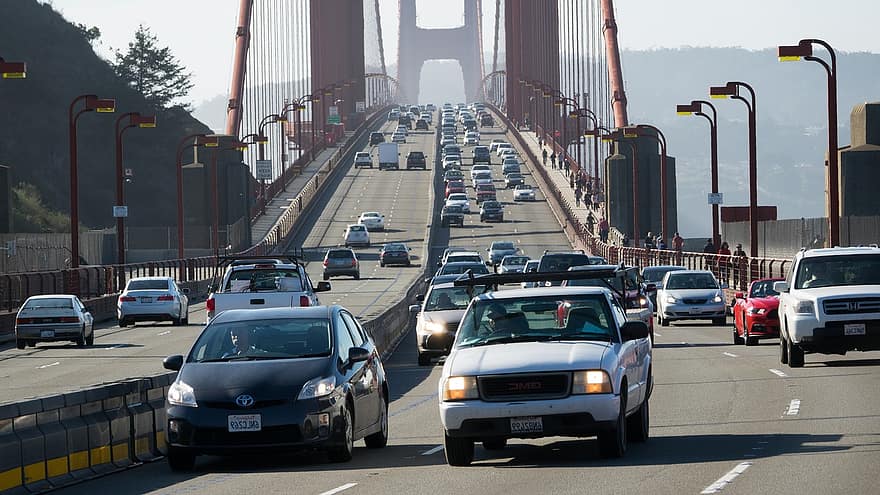The Bay Area experienced a 32% reduction in carbon dioxide emissions in the first seven weeks of shelter-in-place due to COVID-19, according to Santa Clara Board of Supervisors President Cindy Chavez. As the health crisis subsides, Chavez hopes some employees will continue to work remotely.
Chavez and the Bay Area Air Quality Management District introduced the “Cut the Commute” pledge on Monday, the same day the county reopened some indoor businesses. The pledge, taken by several Bay Area companies, asks signatories to give employees “the option of working from home when and where it’s possible” to mitigate air pollution.
“Our typical employee commutes 30 miles round trip during the day,” said Eric Thronburg, president of the San Jose Water Company, at a press conference on Monday. “If I can get 200 employees working from home five days a month, then we can reduce around 30,000 commute miles per month. That equates to around 12 metric tons of carbon dioxide.”
To follow the pledge, companies must offer remote working options to at least 25% of employees whose jobs allow for it. “Cut the Commute” will initially apply to the county’s 22,000 employees and those working for some local companies including Flipboard and the Silicon Valley Leadership Group.
“Because of Covid-19, many employers have devoted a significant amount of time, effort and money to make large-scale remote work viable,” Chavez wrote in an opinion piece in favor of “Cut the Commute” in the Silicon Valley Business Journal “Let’s use that effort, and the hard-won experience gained over these last few months, to improve the environment, quality of life, and economy of the nine counties that make up the San Francisco Bay Area by embracing a future that makes it a permanent feature.”
Chavez also cited Stanford’s success in minimizing commutes.
“What if there was a way to save more than $100 million over a decade, while simultaneously helping the environment by reducing your carbon emissions by almost 5,000 metric tons a year,” Chavez wrote. “Would you do it? Stanford University, with its 20,000-strong local workforce, did just that between 2002-2012. After an extensive planning process, it used a multi-pronged approach to reduce the number of employees who commuted to campus in a solo vehicle by 25 percent.”
Multiple major Silicon Valley companies are already moving to permanent remote operations for part or all of their workforce. On May 12, Twitter announced that its employees could choose to work from home indefinitely. Facebook adopted a similar policy a week later.
Contact Logan Little at loganparislittle ‘at’ gmail.com.
